Wheels and Wolves
| By: Carl Teichrib; ©2002 |
| Both wheels and wolves are used as occult symbols—but that doesn’t mean we need to avoid all references with either one! As Carl Teichrib points out: context is important in understanding various esoteric symbols. |
- Mysticism and occultism abound with symbols that often point to a transcendental reality beyond conscious understanding. —Nevill Drury, Dictionary of Mysticism and the Occult, p. 249.
- There are, therefore, no substitutes for true mystical symbols. A mystical symbol is the very thought form of the Cosmic law itself. —Ralph M. Lewis, Behold the Sign: Ancient Symbolism, p. 12.
- …to the student of mysticism, symbols are of great importance; they teach esoteric truths, and they are instruments in his development. —Erwin W. E. Watermeyer, “The Mystical Significance of Symbols,” Rosicrucian Digest, Feb., 1984.
Erwin Watermeyer, an initiated Rosicrucian, stated in a Rosicrucian Digest article, “Throughout his studies the student of mysticism meets manifold symbols. They face him from books and from temple walls….”
Occult students are not the only ones who see “manifold symbols.” Throughout North America, and all over the world, esoteric symbols are prominently displayed on temples, public buildings, educational institutes, statues, monuments, shields and crests, and even money. All of us will encounter occult symbols sometime in our lives; many of us see mystical symbols on a daily basis (the Great Seal on the US one dollar bill is one example).
Mystical symbols act as an authentic language system to those who understand its speech. Moreover, the symbols in our discussion contain spiritual dimensions, wrapped in centuries of mysticism and occultism; we’re not talking of simple road signs and traffic markers. Sadly, occult symbols—“road markers” which point the way to “alternative doctrines”—have been openly propagated by the rapid advancement of the New Age Movement. Today’s neo-pagan world is awash in this esoteric language.
Steeped in the philosophies of pagan mystery religions and secret societies, this neo‑pagan foundation forms a spiritual alternative to the Biblical worldview, fully equipped with alternative histories, alternative ways of salvation, alternative gods, and alternative realities.
Understanding this greatly amplifies the words of Proverbs 14:12, “There is a way that seems right to a man, but in the end it leads to death.”
Manly P. Hall, one of the most influential occultists of the last century, wrote this of symbols, “They are centers of a mighty force, figures pregnant with an awful power…” (Lectures on Ancient Philosophy, p. 356).
The Wheel Goes Round:
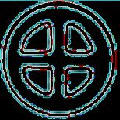
Wheels are everywhere—on cars, airplanes, garden carts, bicycles, children’s pull-toys—everywhere; we use them everyday and in all sorts of different ways.
Does this mean that each of these uses is based in occult philosophies? Not at all. Context is necessary in understanding various esoteric symbols—“wheels” included. In day-to-day life, wheels are simple yet marvelous devices which allow us to take advantage of personal and mass transportation, production and mechanization, and a host of common tasks necessary in today’s world. It’s a simple and completely benign fact.
On the other hand, as a religious symbol in the context of occult doctrine, the wheel takes on a very different meaning. It’s anything but simple or benign.
For 3500 years, the wheel has been used as a symbol within occult and esoteric religious societies. It has been used primarily as a Sun symbol—dedicated to the various solar deities throughout history, especially in ancient European cultures.
Explaining the pervasive use of the solar wheel, archaeologists Lesley and Roy Adkins wrote, “In the Romano-Celtic world, it is depicted with various gods on nearly 200 stone monuments and in many other representations….”
Miranda Green, author of the Dictionary of Celtic Myth and Legend, states,
- In the Celtic Iron Age, people buried bronze model wheels with the dead, perhaps to illuminate the dark places of the underworld…Warriors wore solar amulets as protection in battle…Celtic helmets are carved with wheel-shaped talismans. Celtic coins depict horses with wheel-shaped solar signs above them…In Gaul, the Rhineland and Britain, there is evidence that an indigenous solar god, whose symbol was the spoked wheel, was identified with the Roman SKY-GOD Jupiter. (capitals in original)
Wheels are also connected to sacred Hindu deities. In Hinduism, “Sudarsana” is the name of Visnu’s wheel which symbolizes the “limitless power of his mind.” Hinduism also uses the wheel symbol as a representation of karma and reincarnation—a succession of births, deaths, and rebirths until spiritual liberation can occur.
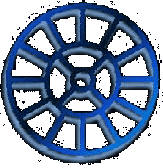
Many other religions and mythological belief systems employ wheels as cosmic-deity symbols. One writer, Jack Tresidder, lists only a few; “Asshur, Shamash and Baal in the Near East; Zeus, Apollo and sometimes Dionysus in Greece; Vishnu-Surya in India.”
Rosicrucianism, a mystical society with many off-shoot bodies in existence today, also embraces the wheel—and the circle—as a spiritual symbol linking the cosmos with “universal deity.” This cosmic idea can be quickly summed up as; God is in all, is all, and that’s all.
The Wolf Spirit:
As a rural Canadian who loves the outdoors, I’ve had a number of opportunities to spot wolf tracks in the snow and along the river sand-bars where I grew-up. A couple of years ago, my wife and I were fortunate enough to observe a lone wolf within a mile of my home farm. It was a fantastic experience—the wolf is undoubtedly one of God’s most impressive yet elusive creatures, and we had been granted a rare opportunity to witness one as it traveled through our “back-yard.”
But like many of God’s wonderful designs, the wolf has been embraced as a symbolic spiritual/esoteric creature. In Scandinavian mythology the wolf was associated with evil and was connected with Loki, the god of fire. To the Grecians, the wolf was a spiritual companion to Apollo, and it eventually became an emblem of Rome.
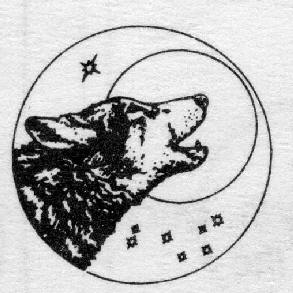
More recently, the wolf has found its way into the Tarot deck of the Golden Dawn—a western magical order steeped in occult traditions. In this deck, the wolf represents the destroyer. And in one card, a wolf and child represent the esoteric balance of creation and destruction. Within other western “magical” teachings, the wolf signifies the wild side of the human psyche, which is to be encouraged and fostered.
But of all the religious-wolf connections, the one spiritual tradition that embraces the wolf more than any other is that of Native American spirituality. In Native American religions, the wolf is viewed as a pathfinder guiding the initiate through spiritual experiences and growth. It is viewed as a “power animal,” one closely linked with Native Shamanism (witchdoctors) —a very potent and real component of Native religions. Thus, for the person wishing to attain the wolf’s spiritual characteristics, one must harmonized himself with the powers and attributes of the animal—in essence, giving himself over to the wolf’s spirit.
Native American spirituality is undeniably powerful. Barney Lacendre, a native of northern Saskatchewan and a former witch-doctor, wrote a very eye-opening book titled The Bushman and the Spirits. It’s a simple account of his life in bondage to animal spirits and the dark powers of demonic forces. But more than that, it’s an incredible witness to the bondage-breaking reality of the Word of God and the saving grace of Jesus Christ—a power so great it freed Barney from a life of addiction and overt demonic influence.
As Christians we need to be aware of the spiritual forces which have guided our history and cultures—such as the wheel symbol. But more than that we need to share the saving truth of God’s Word which frees those who are in spiritual bondage.
(I would greatly encourage you to contact the Northern Canadian Evangelical Mission— an evangelical organization dedicated to telling and teaching Native Americans about the good news of Jesus Christ—and obtain for yourself a copy of The Bushman and the Spirits. It will open your eyes to the reality of Native spirituality, and the overcoming power of the God’s good news. The book can be ordered from the NCEM website located at www.ncem.ca.)
Carl Teichrib is a Canadian-based researcher and writer on globalization and world religious developments, including occultism. His email is [email protected].




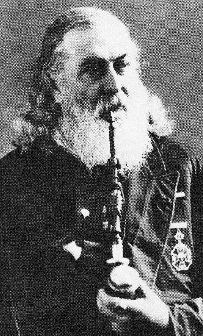
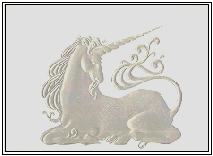



[…] REDIRECT Wheels and Wolves […]
[…] Read Part 18 […]